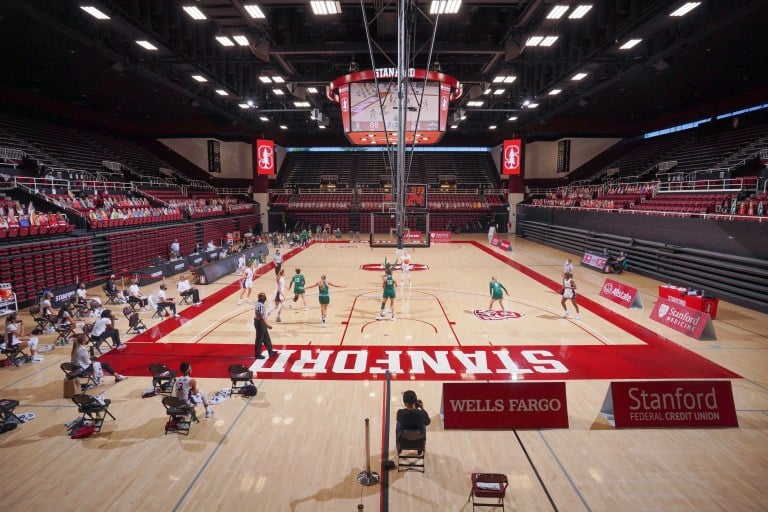Groundbreaking changes to name, image and likeness (NIL) rules promise to usher in an era of adjustment in how student-athletes at Stanford, and around the country, are compensated for their work. But the effects of the decision will likely extend beyond compensation — including financial equity and literacy — and ultimately give athletes more control over their images.
After generating controversy for years, the NCAA’s new NIL directive grants athletes more control over how their persona is utilized in modern society. The new rules allow athletes to engage in NIL activities that are consistent with the law of the state where their school is located, according to a release. By allowing athletes to earn money for the use of their name, image and likeness, the policies aim to rectify the growing financial divide between players and staff.
With fewer than 2% of student-athletes turning pro and gaining access to expansive contract or endorsement deals, the new rules help create a more equitable landscape for student-athletes.
“College is the only time they have to profit off their hard-earned athletic successes,” said former Stanford volleyball player Hayley Hodson.
Stanford student-athletes wasted no time capitalizing on the new policies: in their first months of eligibility, Cardinals including defensive end Zach Buckey and Olympic swimmer Torri Huske made headlines by inking endorsements with various companies. The laws have even enabled athletes to use their TikTok presence to earn thousands of dollars.
Though some have raised concerns, including the potential impact on player dynamics and team rosters, the NCAA reiterated that the new policies are not related to performance and institutions themselves.
“The policy in all three divisions preserves the commitment to avoid pay-for-play and improper inducements tied to choosing to attend a particular school,” the NCAA wrote in its press release.
Stanford, in response to the recent rule changes, launched Cardinal Connect to help students navigate and utilize NIL opportunities throughout their collegiate careers.
“Cardinal Connect will educate students on key NIL topics including social media strategy, contracts and identity IP and personal finances,” Stanford Athletics’ official press release stated.
The new policy, which was enacted in July 2021, will be bolstered by a new California law passed by Governor Gavin Newsom, potentially affording Cardinal athletes new opportunities to share in the profits of their athletic contributions.
The bill, named SB 206, allows California athletes to profit off of their name, image and likeness, sign endorsement deals and hire licensed agents. Directly clashing with the NCAA’s former NIL rules, state laws such as SB 206 effectively forced the NCAA to choose between updating its policy or losing access to some of its most lucrative markets.
“If the NCAA chose to declare an athlete receiving endorsements ineligible, they would, at least in some states, be violating state law,” wrote University of Mississippi law professor William Berry in an email.
Though SB 206, first passed in 2019, was supported by several high-profile names including Lakers superstar LeBron James, multiple Pac-12 institutions — including Stanford — fought back against the measure at the time. Stanford Athletic Director Bernard Muir wrote in a letter to the state senate then that although Stanford supports the welfare of student-athletes, “allowing student-athletes to receive compensation from their name, image, and likeness, would present serious challenges for higher education institutions and to the collegiate sports model.”
But, the NIL rules are only a temporary fix, as the NCAA lobbies for federal action on NIL law. Congressional action can introduce a national legal basis for NIL rules rather than relying on a patchwork of state laws granting various rights to student-athletes.
“With this interim solution in place, we will continue to work with Congress to adopt federal legislation to support student-athletes,” Division I Board of Directors chair Denise Trauth said in the press release.
The reasoning, however, may be more murky than previously thought, according to Stanford law professor William Gould.
“The NCAA very much wants federal law because … they are concerned about the fact that the states will be building with one against one another to make benefits more generous or rules more flexible for the players,” Gould said.
The NCAA has traditionally been able to enact strict NIL laws based on the amateur categorization of college athletes — a practice enabled by key Supreme Court rulings.
“In the 1980s, the Supreme Court indicated that the NCAA was going to be treated differently than other organizations that particularly were interested in making a profit,” Gould said.
As athletes struggle to balance performance with various financial strains, the policy may provide crucial opportunities while also unlocking new levels of interaction between athletes and universities.
“[The NIL] is going to require Stanford and other universities to consider demands or requests that are made by players for more compensation or remuneration,” Gould added.
